
Roots
Have you ever paused amidst the city’s ceaseless hum, perhaps catching a glimpse of fine dust motes dancing in a sunbeam, and wondered what silent conversations are unfolding on your scalp? It is a subtle thought, often dismissed amidst the rush of daily life, yet it points to a profound truth ❉ our hair, a vibrant expression of identity and heritage, exists in constant dialogue with its surroundings. The urban environment, with its unique atmospheric composition, whispers secrets to our strands, some comforting, others less so. Understanding this intricate exchange begins with a return to fundamentals, to the very foundation of our hair’s existence and its delicate relationship with the air we breathe.

The Scalp’s Protective Veil
The scalp, a living canvas for our hair, acts as a primary shield, a first line of defense against the external world. Composed of specialized skin, it possesses a stratum corneum, a robust barrier. Within this protective layer, proteins like Filaggrin are present, playing a vital role in maintaining its integrity. When this barrier faces consistent external challenges, its ability to guard effectively diminishes.
Think of it as a meticulously constructed wall, designed to keep unwanted elements at bay. Persistent assault can weaken its mortar, allowing microscopic intruders to pass through.
Urban air, a complex cocktail of elements, presents a formidable challenge to this delicate balance. We often consider the visible aspects of pollution, but the invisible constituents, such as particulate matter (PM) and polycyclic aromatic hydrocarbons (PAHs), are the true agents of change. These tiny particles, often smaller than 10 micrometers (PM10) and even 2.5 micrometers (PM2.5), are not merely superficial dust; they are capable of settling on the scalp and hair, even infiltrating deeper skin layers through hair follicles or transcutaneous absorption.
The scalp, a primary shield for our hair, constantly interacts with the subtle yet potent elements of urban air.
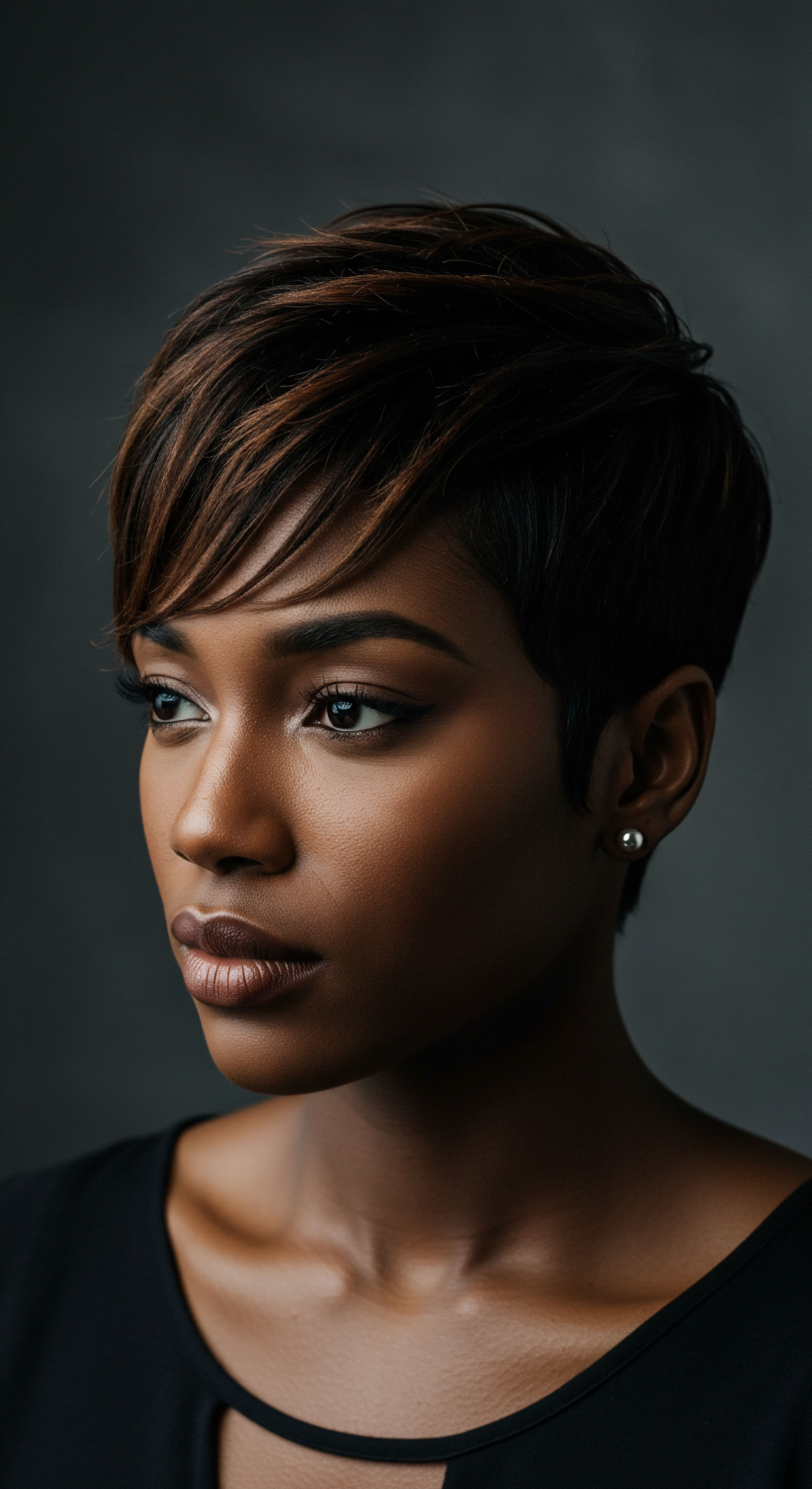
Microscopic Intruders and Cellular Responses
When these airborne particles adhere to the scalp’s surface, they can release soluble components, including gases and ions, initiating a cascade of reactions. One of the primary mechanisms by which particulate matter exerts adverse effects is through the production of Reactive Oxygen Species (ROS). These highly reactive molecules, often called “free radicals,” can cause oxidative stress, a state where cellular components like lipids, proteins, and even DNA face damage. This oxidative assault can impair cellular functions and lead to cell death, directly affecting the health of hair follicles.
Consider the hair follicle itself, a dynamic mini-organ residing within the scalp. It is a site of high cellular proliferation and perfusion, making it particularly susceptible to environmental contaminants. Pollutants, whether absorbed directly through the skin or indirectly via the bloodstream after inhalation, can interfere with the intricate biological pathways that govern hair growth and health. For instance, particulate matter has been observed to impede hair growth by triggering programmed cell death in keratinocytes within cultured scalp hair follicles in an ex vivo environment.
- Particulate Matter (PM) ❉ Tiny solid or liquid particles suspended in the air, categorized by size (e.g. PM2.5, PM10). These microscopic entities can settle on the scalp and hair, initiating harmful reactions.
- Polycyclic Aromatic Hydrocarbons (PAHs) ❉ Organic compounds adsorbed onto particulate matter, known for inducing oxidative stress and inflammatory reactions in the skin.
- Reactive Oxygen Species (ROS) ❉ Unstable molecules that can damage cellular components, leading to oxidative stress and impacting scalp and hair health.

The Scalp’s Living Ecosystem
Beyond the cellular level, the scalp maintains a complex microbial ecosystem, a delicate balance of microorganisms that play a vital role in its overall health. Urban air pollution, with its capacity to alter environmental conditions and introduce foreign substances, can disrupt this microbial harmony. An imbalance in the scalp’s microbiome has been linked to increased susceptibility to infections, inflammation, and chronic scalp conditions. This disruption can create a more hospitable environment for certain microorganisms to proliferate, potentially leading to discomfort and irritation.
The relationship between urban air and scalp sensitivity is not a simple cause-and-effect; rather, it involves a sophisticated interplay of physical deposition, chemical reactions, and biological responses. Understanding these foundational elements provides a clearer lens through which to view the daily challenges our hair faces in the concrete embrace of the city.
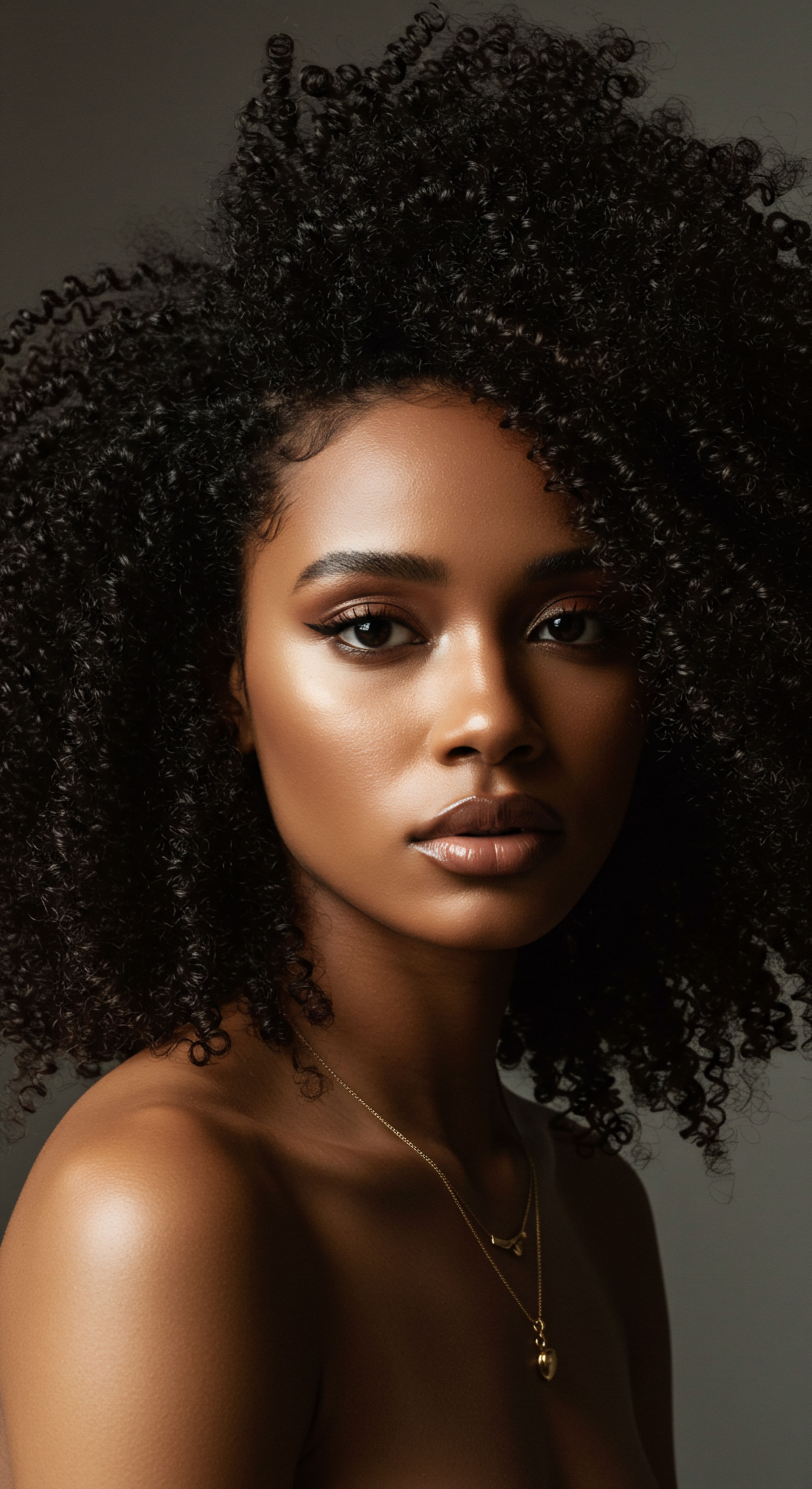
Ritual
Stepping into the rhythm of daily life, particularly within the bustling energy of urban spaces, our hair and scalp often bear the brunt of unseen environmental interactions. It is in these recurring moments, from morning preparations to evening unwinding, that we hold the opportunity to respond with thoughtful, deliberate care. The notion of ‘ritual’ here transcends mere routine; it signifies an intentional engagement with our hair’s wellbeing, acknowledging its exposure and offering it a protective embrace. This section delves into the practical wisdom and applied understanding necessary to shield the scalp from the persistent influences of urban air, transforming simple acts into a purposeful practice of preservation.

What Happens When Urban Air Settles on the Scalp?
When airborne particles and gaseous pollutants alight upon the scalp, they do not simply rest there innocuously. These microscopic invaders, from vehicle exhaust to industrial emissions, interact with the scalp’s natural oils, known as sebum. Sebum, intended as a protective coating for the hair, can inadvertently act as an adhesive, trapping particulate matter and making it stick to the skin. This amalgamation of natural oils and environmental debris can lead to clogged pores and obstructed hair follicles.
The consequences extend beyond simple accumulation. Pollutants can trigger oxidative stress within the skin, disrupting the scalp’s barrier and initiating an inflammatory response. This can manifest as increased sebum secretion, an irritating itch, and the unwelcome appearance of dandruff.
In some cases, prolonged exposure contributes to a condition known as “sensitive scalp syndrome,” characterized by prickling sensations, itching, excessive oiliness, dandruff, and even hair thinning. The scalp, in its attempt to defend itself, can become inflamed, tender, and generally uncomfortable.
Daily interactions with urban air can transform the scalp’s natural oils into pollutant traps, prompting irritation and sensitivity.

Protective Styling as a Shield
For textured hair, protective styles hold a long and celebrated lineage, extending beyond aesthetic appeal to serve as a practical defense. Braids, twists, and various up-dos have historically offered respite from daily manipulation and, crucially, from environmental stressors. These styles encase the hair, reducing its direct exposure to the atmosphere’s less desirable elements. While not a complete seal, they diminish the surface area available for pollutants to settle upon the hair shaft and, by extension, the scalp.
Consider how these styles create a physical barrier. A tightly braided style, for instance, presents a more cohesive surface than loose, flowing strands. This lessens the direct contact of individual hair fibers with airborne particles, potentially reducing the amount of particulate matter that can adhere and migrate down to the scalp. It is a subtle, yet effective, layer of defense, a tradition rooted in both beauty and preservation.
| Pollutant Type Particulate Matter (PM) |
| Sources Vehicle emissions, industrial processes, dust, soot |
| Potential Scalp Effects Clogged follicles, oxidative stress, irritation, dandruff, hair loss |
| Pollutant Type Polycyclic Aromatic Hydrocarbons (PAHs) |
| Sources Combustion (vehicle exhaust, cigarette smoke), industrial processes |
| Potential Scalp Effects Oxidative stress, inflammation, DNA damage, premature graying, hair loss |
| Pollutant Type Volatile Organic Compounds (VOCs) |
| Sources Indoor sources (cleaning products, paints), industrial emissions |
| Potential Scalp Effects Skin inflammation, scalp irritation |
| Pollutant Type Heavy Metals (e.g. Lead, Mercury) |
| Sources Industrial emissions, contaminated water, old pipes |
| Potential Scalp Effects Interference with nutrient absorption, oxidative damage, hair loss |
| Pollutant Type Nitrogen Oxides (NOx) |
| Sources Vehicle emissions, power plants |
| Potential Scalp Effects Oxidative stress, skin barrier compromise |
| Pollutant Type Understanding these common urban pollutants helps tailor protective care strategies. |

Cleansing with Purpose
Regular, gentle cleansing becomes a foundational practice in managing the scalp’s exposure to urban air. This is not about stripping the hair of its natural oils, but rather about removing the accumulated debris and pollutants before they can cause lasting irritation or damage. A mild shampoo, perhaps one formulated with chelating agents like Ethylene di-amine tetra acetic acid (EDTA), can help to bind and remove heavy metals and other particulate matter that cling to the hair and scalp.
The frequency of washing also plays a role. While textured hair often benefits from less frequent washing to preserve moisture, an urban environment might necessitate a slightly more consistent cleansing schedule to prevent pollutant buildup. It becomes a delicate balance ❉ maintaining the hair’s inherent moisture while diligently purging environmental contaminants.
Beyond shampoo, incorporating scalp-focused treatments, such as targeted serums or pre-shampoo oils, can offer additional layers of defense. These products, particularly those rich in antioxidants, can help neutralize the reactive oxygen species generated by pollutants, mitigating their damaging effects. A thoughtful cleansing ritual is a direct response to the urban environment, a practical step in preserving scalp comfort and hair vitality.

Relay
To truly comprehend the intricate dance between urban air and scalp sensitivity, we must move beyond the surface, delving into the deeper currents where biology, environment, and lived experience converge. This segment extends an invitation to a more sophisticated understanding, where the invisible forces of the city reveal their profound impact on the very architecture of our hair and scalp. It is here that we explore the interconnectedness of seemingly disparate factors, drawing upon research and empirical observations to illuminate the complexities of this silent interaction.
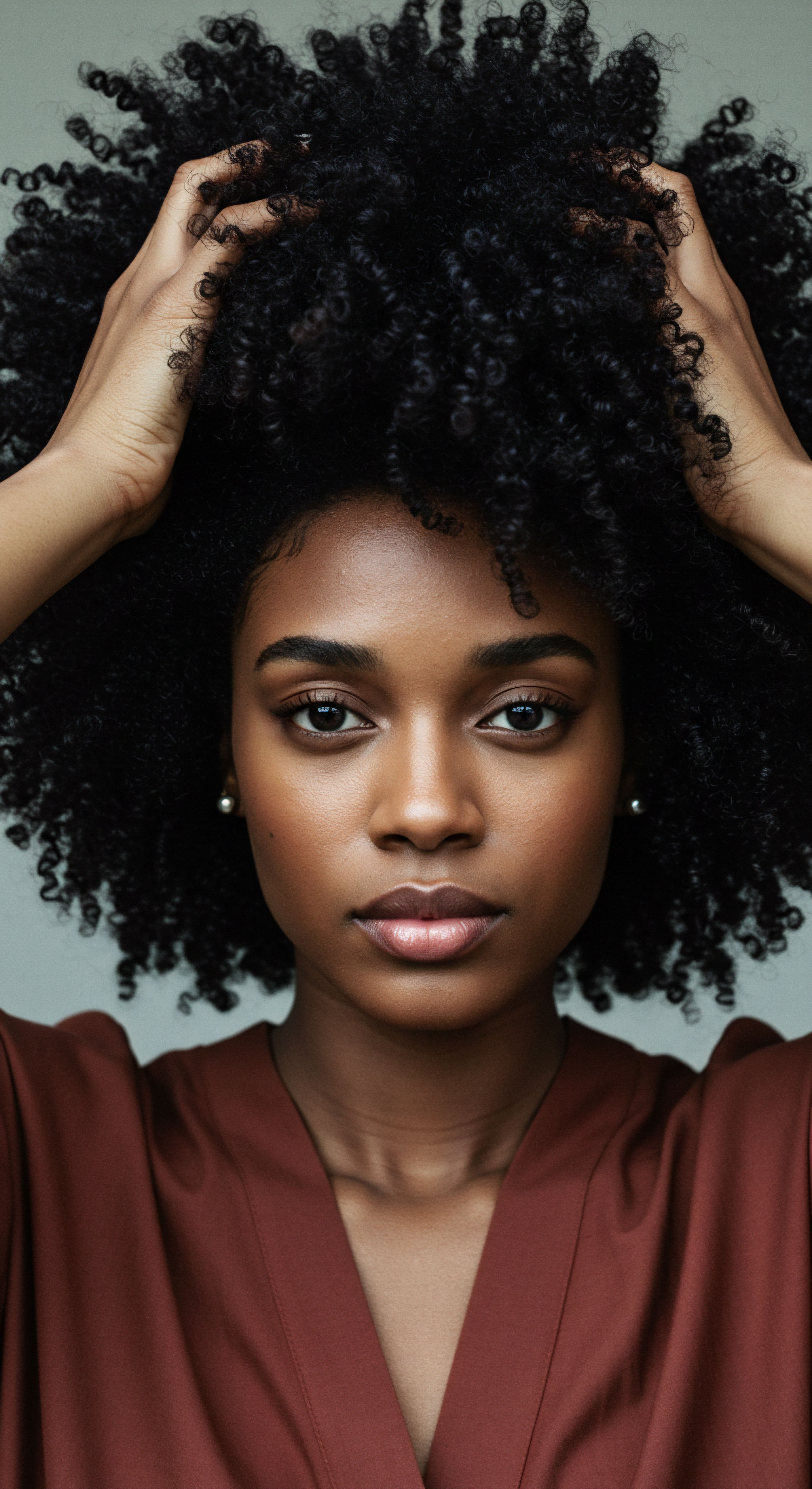
The Oxidative Stress Cascade
At the heart of pollution’s impact on scalp sensitivity lies the concept of oxidative stress. Airborne pollutants, particularly particulate matter and polycyclic aromatic hydrocarbons, initiate a relentless production of reactive oxygen species (ROS) upon contact with skin cells. These highly reactive molecules are akin to tiny, indiscriminate aggressors, causing damage to cellular components including lipids, proteins, and DNA. On the scalp, this cascade leads to inflammation and can upregulate enzymes that break down collagen within the skin, compromising the structural scaffolding that supports healthy hair follicles.
Consider a study published in the Polish Journal of Environmental Studies which highlights that urban dust exposure leads to a decreased expression of Filaggrin in keratinocytes and ex vivo models. Filaggrin is a protein vital for the integrity of the skin barrier. A reduction in its expression means a compromised barrier, rendering the scalp more susceptible to further penetration by pollutants and subsequent irritation. This diminished barrier function can result in increased transepidermal water loss (TEWL), leaving the scalp feeling dry, tight, and more vulnerable to external aggressors.
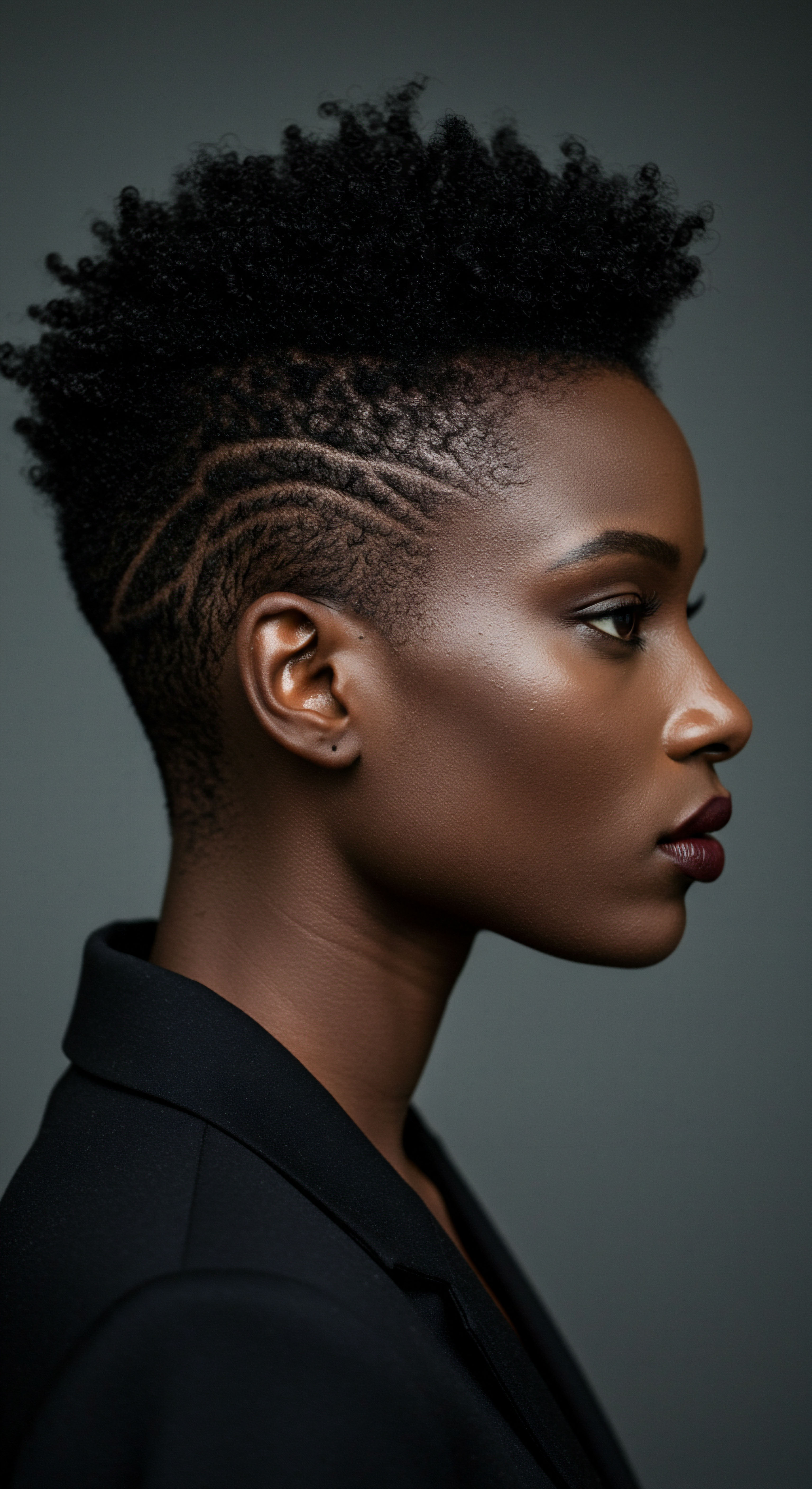
Heavy Metals and the Hair Follicle
Beyond the more commonly discussed particulate matter, urban air often carries concentrations of heavy metals such as lead, mercury, cadmium, and arsenic, originating from industrial emissions, vehicle exhaust, and even contaminated water sources. These metals do not merely settle on the surface; they can be absorbed transcutaneously or via hair follicles, and even circulate through the bloodstream, reaching hair follicles indirectly.
The presence of these heavy metals can have a direct and disruptive influence on hair growth. They interfere with the body’s ability to absorb essential nutrients like zinc, iron, and calcium, all of which are vital for robust hair development. Moreover, heavy metals can directly inhibit the binding capacity of Keratin, the structural protein providing strength to hair. Research indicates that heavy metals can also induce oxidative damage, leading to premature aging of hair and making it more prone to thinning and breakage.
Urban pollutants initiate oxidative stress, compromise the scalp barrier, and introduce heavy metals that directly impair hair follicle function.

A Closer Look at Hair Loss and Pollution
The link between urban air pollution and hair loss is increasingly recognized. One striking piece of evidence comes from a study examining human hair fibers with known concentrations of polycyclic aromatic hydrocarbons (PAHs). This research, utilizing transmission electron microscopy, revealed an accelerated structural degradation of the hair fiber over time in samples with increased PAH concentrations. This means the very building blocks of the hair, the cuticle and cortex, show signs of damage more rapidly when exposed to higher levels of these pollutants.
The study further demonstrated that fibers with increased PAH contamination showed increased damage after UV treatment, pointing to a synergistic effect between pollution and sun exposure. This highlights how the environmental stressors do not act in isolation but often compound their negative effects. The findings suggest that the subtle, yet continuous, assault of urban air can lead to tangible, visible changes in hair integrity, manifesting as dullness, dryness, breakage, and even thinning.
- Oxidative Stress ❉ Pollutants generate free radicals that damage cellular components, leading to inflammation and compromised scalp health.
- Barrier Dysfunction ❉ Reduction in vital proteins like filaggrin weakens the scalp’s protective layer, making it more permeable to irritants.
- Follicle Damage ❉ Pollutants can directly impede hair growth by triggering cell death in hair follicle keratinocytes and disrupting hair growth cycles.
- Sebum Alteration ❉ Pollution can change sebum composition, leading to increased oiliness, clogged pores, and greater pollutant adherence.
- Premature Graying ❉ Oxidative stress from pollutants can degrade melanin, accelerating the loss of hair pigment.
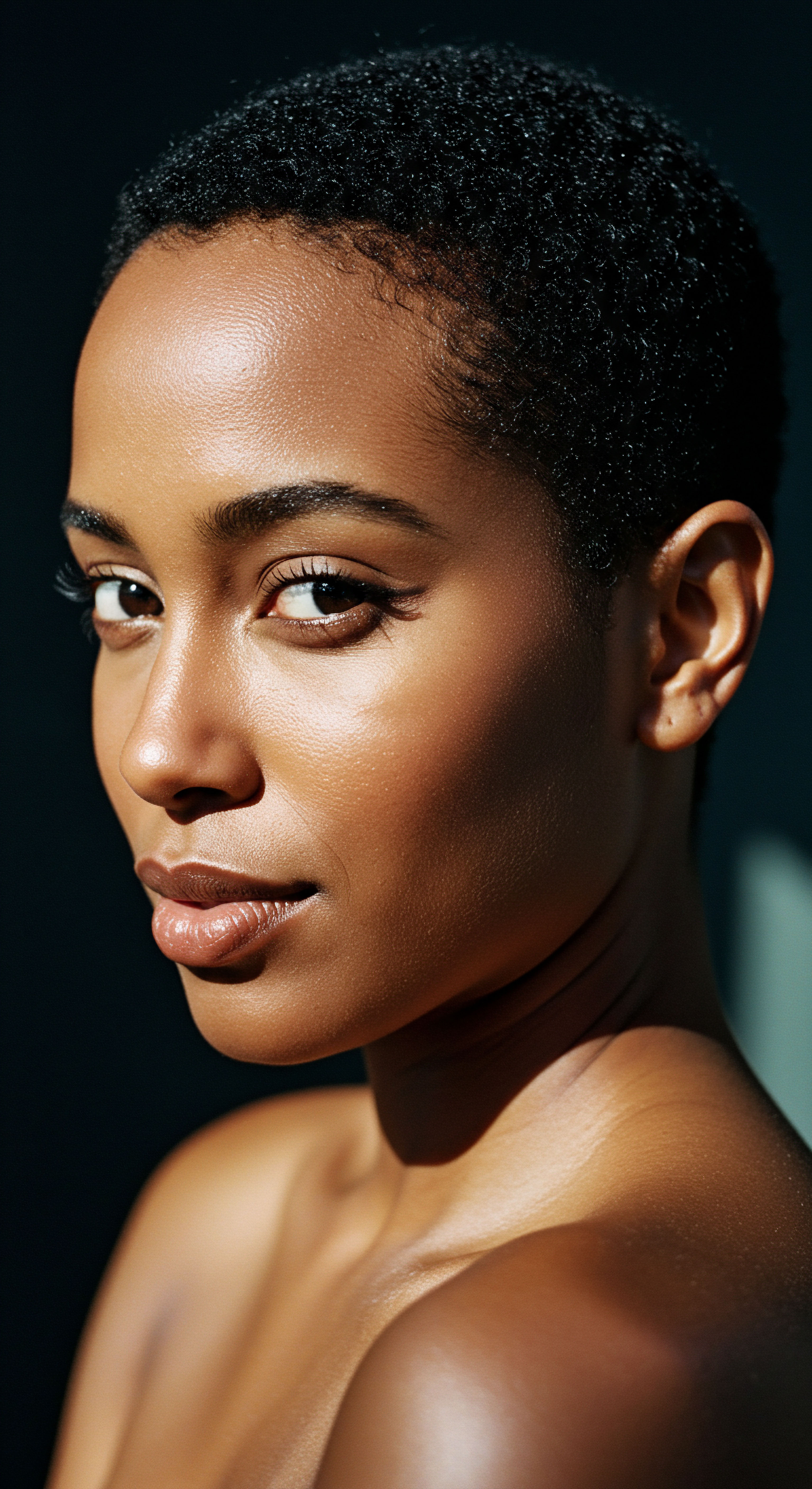
The Scalp Microbiome and Inflammation
The delicate balance of the scalp microbiome, the community of microorganisms residing on the skin, is another critical aspect affected by urban air quality. Pollution can alter this balance, leading to an overgrowth of certain microbes, such as Malassezia, a naturally occurring fungus often associated with dandruff. This microbial imbalance, combined with pollutant-induced oxidative stress, contributes to inflammation and irritation on the scalp.
A congested scalp, often a direct result of pollution, can become inflamed. Trapped impurities and microbial metabolites can irritate the skin, leading to redness, itching, and a compromised barrier. The body’s immune response, activated to address the debris and potential pathogens, results in inflammation, which can manifest as diffuse tenderness or a general persistent itch. This chronic inflammation can degrade the scalp’s extracellular matrix and increase susceptibility to infections, potentially leading to more severe conditions, including scarring alopecia in extreme cases.
| Health Indicator Scalp Barrier Function |
| Impact from Urban Air Compromised filaggrin expression, increased permeability |
| Associated Symptoms Dryness, irritation, increased sensitivity |
| Health Indicator Hair Follicle Health |
| Impact from Urban Air Oxidative stress, cell death, nutrient disruption |
| Associated Symptoms Hair thinning, breakage, accelerated hair loss |
| Health Indicator Sebum Production |
| Impact from Urban Air Increased secretion, altered composition |
| Associated Symptoms Oily scalp, clogged pores, dandruff |
| Health Indicator Hair Pigmentation |
| Impact from Urban Air Melanin degradation due to oxidative stress |
| Associated Symptoms Premature graying |
| Health Indicator Hair Texture |
| Impact from Urban Air Cuticle and cortex damage, protein degradation |
| Associated Symptoms Dullness, dryness, brittleness, roughness |
| Health Indicator The effects of urban air pollution on scalp and hair health are diverse and interconnected. |
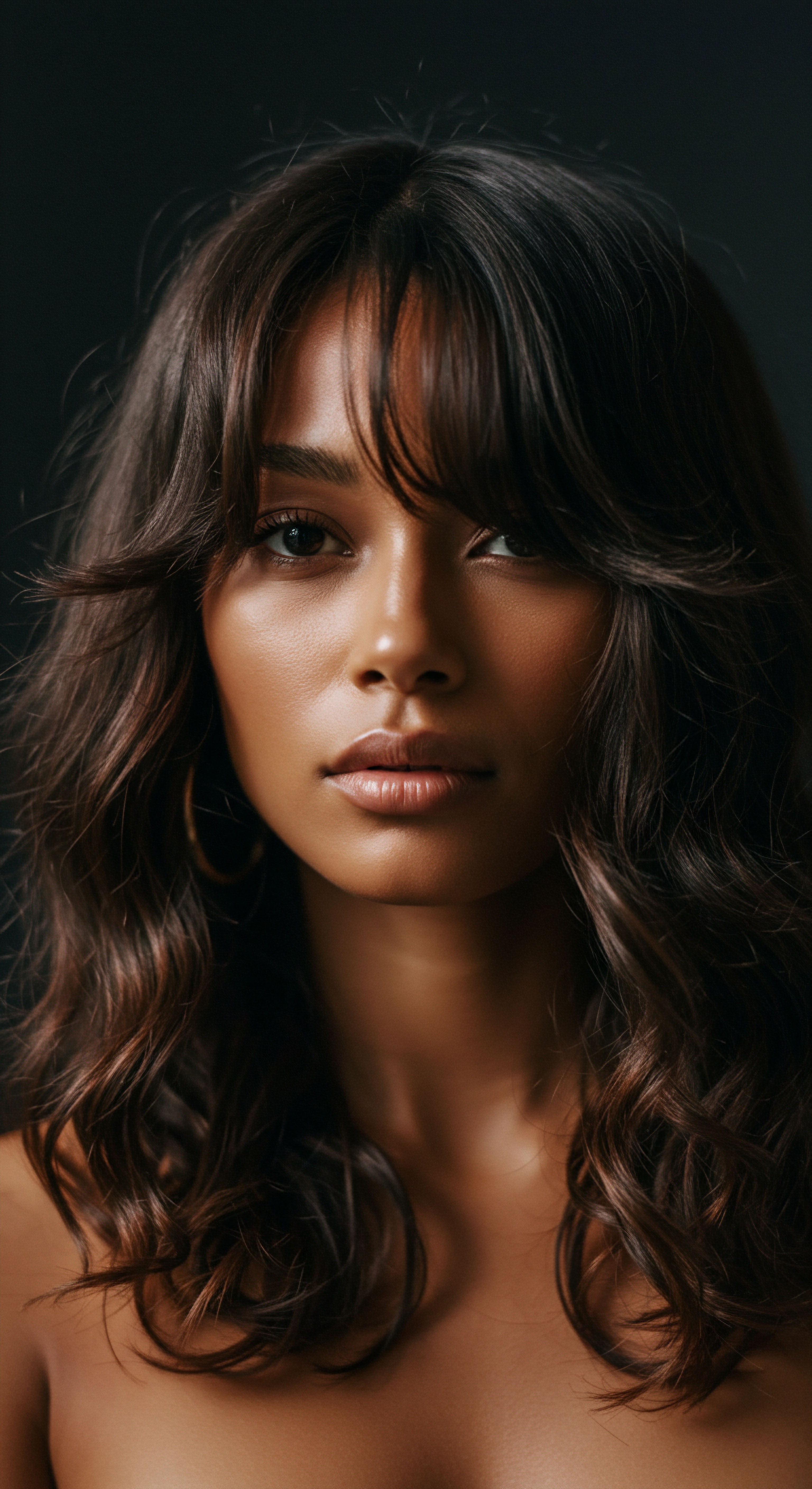
Case Study Insight ❉ Sensitive Scalp Syndrome in Urban Dwellers
A particularly illuminating example of urban air’s impact is the observed rise in “Sensitive Scalp Syndrome” among individuals relocating to or residing in metropolitan areas. A study published in Hair Therapy & Transplant (Rajput, 2015) documented young patients who, after moving to metro cities, presented with a collection of symptoms including prickling sensations, itching, dandruff, oily scalp, and pain in the hair roots. This cluster of symptoms was identified as Sensitive Scalp Syndrome, directly attributed to increasing levels of air pollution, encompassing particulate matter, dust, smoke, heavy metals like nickel, lead, and arsenic, alongside gaseous pollutants such as sulfur dioxide, nitrogen dioxide, and polycyclic aromatic hydrocarbons.
The study further detailed that these pollutants migrate into the dermis, both trans-epidermally and through the hair follicle conduit, leading to oxidative stress and subsequent hair loss. What is particularly striking is the observation that this condition can mimic or overlap with androgenetic alopecia, necessitating careful trichoscopic evaluation for proper identification. The authors reported encouraging responses within 6-8 weeks for patients adhering to a hair care regimen that included antioxidants, regular hair washing with mild shampoos, and the use of EDTA shampoos to counter the effects of pollution. This real-world observation underscores the tangible and often debilitating effects of urban air on scalp comfort and hair health, pointing to the need for targeted protective measures.
The intricate dance between urban air and scalp sensitivity reveals itself through cellular responses, heavy metal interference, and observable conditions like Sensitive Scalp Syndrome.

The Interplay of Indoor and Outdoor Air
It is also important to recognize that the scalp’s exposure to pollutants is not limited to the outdoor environment. Indoor air quality can also play a substantial role in scalp sensitivity. Volatile organic compounds (VOCs) released from various sources within homes and offices, such as cleaning products, furniture, and building materials, can settle on the scalp. Poor ventilation can exacerbate this, creating a localized environment where these contaminants accumulate, contributing to irritation, dryness, and inflammation.
This layered exposure, both from the bustling streets and the quiet confines of our living spaces, necessitates a comprehensive approach to scalp care. The science consistently points to oxidative stress, barrier dysfunction, and direct follicular damage as key mechanisms through which urban air impacts scalp health, making it a critical area of focus for anyone seeking to maintain hair vitality in a metropolitan setting.
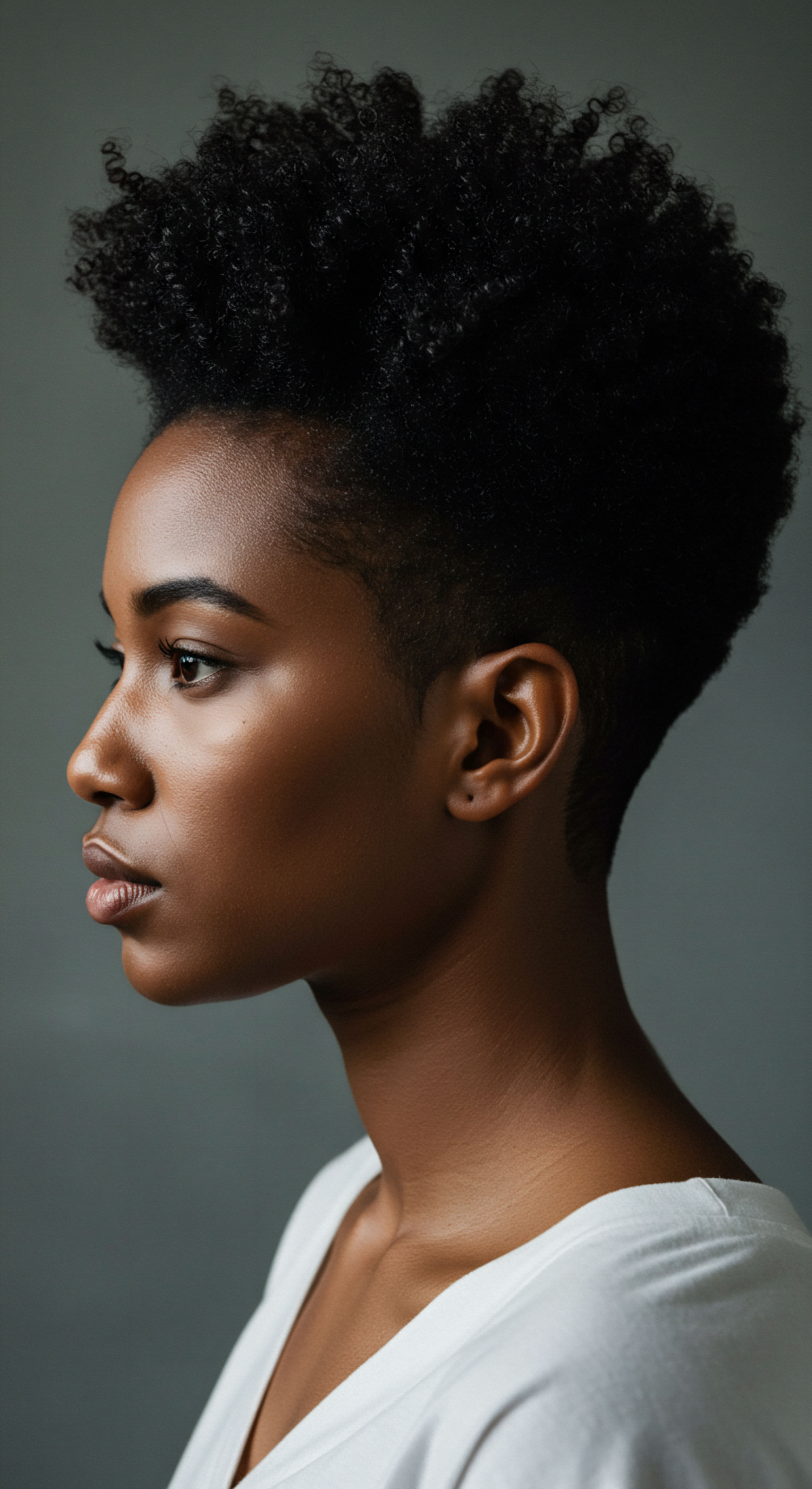
Reflection
The journey through the subtle yet significant effects of urban air on scalp sensitivity reveals a deeper connection to our environment than often acknowledged. Our hair, a living extension of ourselves, stands as a testament to this constant interplay, absorbing, reacting, and signaling its needs. As we move through cityscapes, the air, though invisible, leaves its indelible mark, shaping the comfort and health of our scalp. This understanding invites a thoughtful pause, prompting us to consider how we might better attune our practices to the silent whispers of our strands, offering them the care and protection they truly deserve in a world that never quite stands still.

References
- Son, Eunhye, and Ki Han Kwon. “The Invisible Threat to Hair and Scalp from Air Pollution.” Polish Journal of Environmental Studies, vol. 34, no. 2, 2025, pp. 1745-1753.
- Rajput, Rajendrasingh. “Understanding Hair Loss due to Air Pollution and the Approach to Management.” Hair Therapy & Transplant, vol. 5, no. 133, 2015.
- Samra, Tara, Rachel R Lin, and Andrea D Maderal. “The Effects of Environmental Pollutants and Exposures on Hair Follicle Pathophysiology.” Skin Appendage Disorders, vol. 10, no. 4, 2024, pp. 262-272.
- Jin, SP, et al. “Urban particulate matter in air pollution penetrates into the barrier-disrupted skin and produces ROS-dependent cutaneous inflammatory response in vivo.” Journal of Dermatological Science, vol. 91, no. 2, 2018, pp. 175-183.
- Mekonnen, Yitayal, et al. “Environmental Air Pollutants Affecting Skin Functions with Systemic Implications.” International Journal of Molecular Sciences, vol. 24, no. 3, 2023, p. 2095.
- Monteloeder. “Monteloeder’s Zeropollution boosts scalp health under environmental stress, study finds.” Cosmetics, 3 Sept. 2024.
- NYSCC. “Impact of Environmental Stressors on Hair.” NYSCC, 12 July 2021.
- Rausch. “5 reasons why you should protect your hair from air pollution.” Rausch, 22 Apr. 2024.
- Son, Eunhye, and Ki Han Kwon. “The Invisible Threat to Hair and Scalp from Air Pollution.” Polish Journal of Environmental Studies, vol. 34, no. 2, 2025, pp. 1745-1753.
- Schoelermann, Anna, et al. “Human pollution exposure correlates with accelerated ultrastructural degradation of hair fibers.” Proceedings of the National Academy of Sciences, vol. 116, no. 38, 2019, pp. 18818-18823.
- Shin, Eun-Jung, et al. “Particulate Matters Induce Apoptosis in Human Hair Follicular Keratinocytes.” Annals of Dermatology, vol. 31, no. 4, 2019, pp. 403-410.
- Times of India. “Gray Hair Causes or Reasons ❉ What Makes Hair Turn Gray Before Age.” Times of India, 15 Apr. 2019.
- uBreathe. “Can Air Pollution Damage your Hair?” uBreathe, 28 Sept. 2024.
- Zaid, Asma, et al. “The Impact of Environmental Pollution on Hair Health and Scalp Disorders.” Journal of Dermatology and Cosmetology, vol. 7, no. 1, 2023, pp. 1-7.